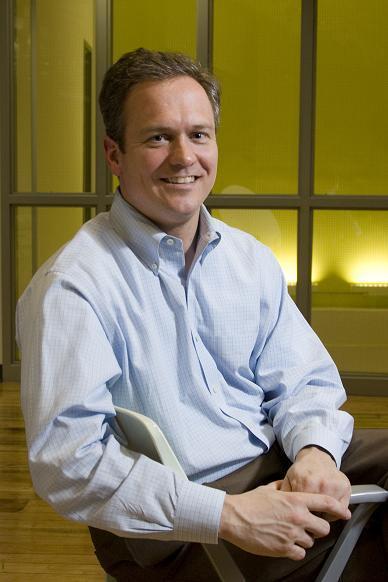
The new Center for Design and Business reflects less of a restructuring by newly hired executive director Bill Foulkes, he says, than a “dramatic evolution” of design as a core competency in business thinking in the United States and abroad.
“The international business world is embracing design at an accelerated rate,” Foulkes said in an interview. “That shows the power of design in creating business opportunities.”
Multinational companies such as Procter & Gamble are leading the pack, he said. In an interview published in the June 2005 issue of Fast Company, P&G chairman, CEO and President A.G. Lafley declared that design, more than price or technology, should be the company’s main differentiator. Lafley wants to make design part of the company’s strategy so that P&G will become the No. 1 consumer design company in the world.
As more and more companies look to design for answers, Foulkes wants the Center for Design and Business to be the first resource that pops into their minds.
So far in its 10-year history, the center – formed in 1997 through a partnership between Rhode Island School of Design and Bryant University – has focused more on programming and workshops than on its role as a resource center for universities, companies and governments interested in implementing design thinking.
Through its restructuring, Foulkes is broadening the center’s network of partners to include more universities and companies. And he is widening the center’s scope by making it more accessible to the global business community.
One new, major component of the center will be the creation of a database to house case studies that demonstrate the way design thinking is being implemented to spur revenue growth in the United States and throughout the world.
The database could then be used as an educational tool, Foulkes said. And since it would be international, it could bring knowledge from outside the United States to companies inside and vice versa.
The new center also will seek to be more actively involved in facilitating research partnerships between companies and universities, governments and universities, between universities and whatever else might make sense, Foulkes said.
If it could be compared to anything, Foulkes wants the center to mimic the function of the Massachusetts Institute of Technology’s Media Lab, which supports more than 350 research projects per year and involves sponsors in more than $30 million of research programming.
One example of the type of research the center would aim to facilitate is the current partnership between professors at RISD and Brown University who are developing a new, alternative vehicle for the developing world.
The RISD-Brown collaboration – called eMotive – is creating a prototype electric vehicle that has four wheels like a car but steers like a motorcycle and looks sort of like a four-wheeler. The goal is to create a safer way for families in developing countries to transport themselves and their belongings. Many cram way too much onto motorcycles, creating life-threatening situations.
“Design, at its heart, is a problem-solving and problem-definition discipline,” he said. The goal is to share that discipline with industries and governments and universities around the world.
Foulkes took the job as executive director three months ago after being hired as a consultant by Bryant University to conduct a study of where the center should be going conceptually.
Though the center already had helped launch 70 new products, incubate and launch 20 new companies, promote and organize 70 roundtable discussions/workshops and attract more than 3,200 attendees to its annual Success by Design conference last year, Foulkes saw the opportunity to expand.
He wants the center to do more than add to the international discussion about design and business; he wants it to lead the discussion.
Foulkes thinks it’s feasible. He’s going to build on the center’s 10 years worth of contacts and already recognizable name to get there.
“The center has built a good foundation,” he said. But the time is right to expand its presence as businesses, both global and domestic, are “looking for design to take a leadership role in creating economic opportunities internationally.”
Foulkes will present the center’s expanded network of partnerships and resources, including RISD’s growing body of knowledge in applied design thinking, from 5:30 to 7 p.m. this Thursday at RISD’s Fleet Library, 15 Westminster St., Providence. The event is open to the public.












